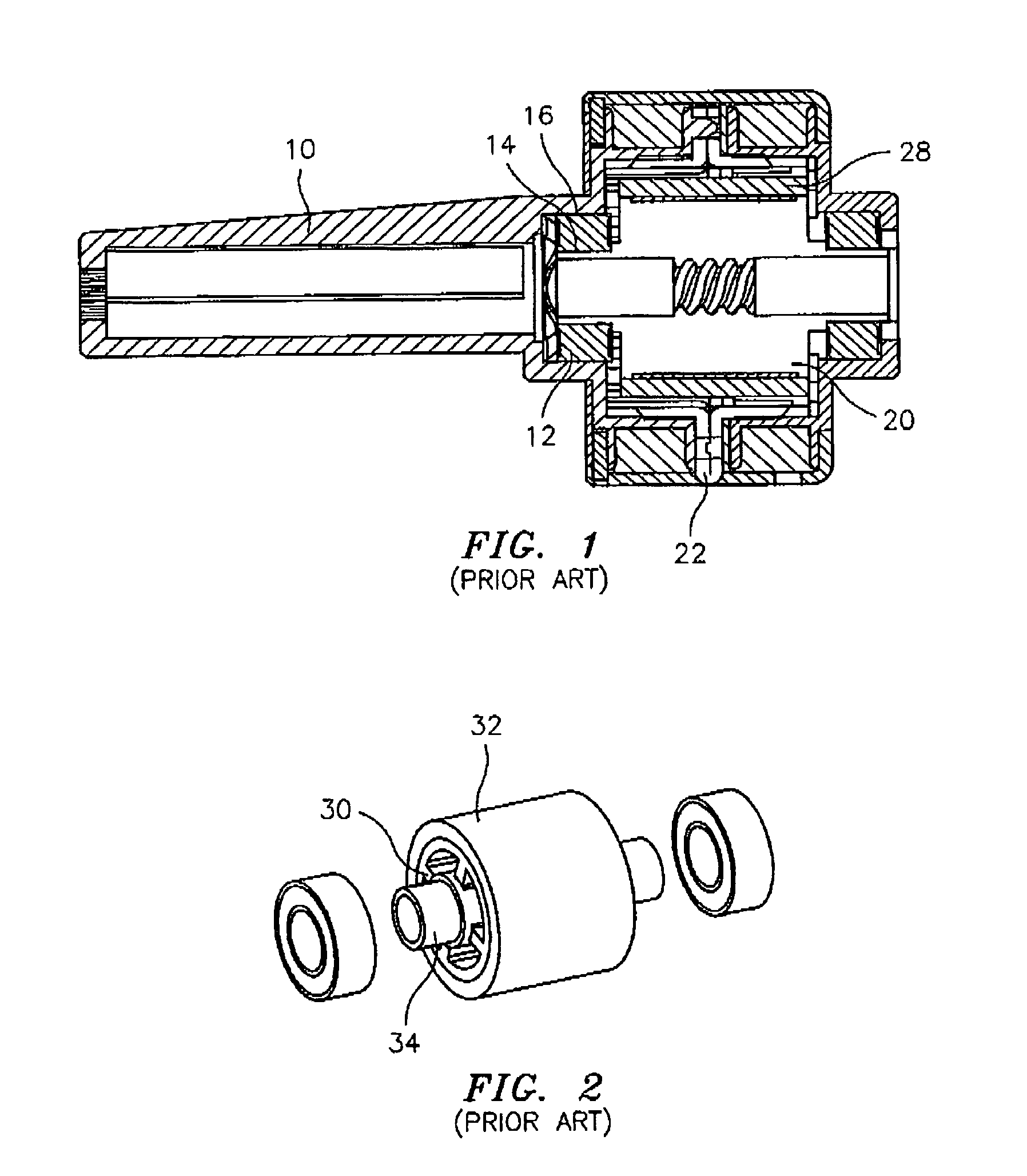Can stack linear actuator
a linear actuator and stacking technology, applied in the direction of windings, mechanical energy handling, magnetic circuit shape/form/construction, etc., can solve the problems of large stacking and concentricity of motor designs, difficult to create parts with identical dimensions, trade-offs, etc., to increase the torque output of the motor and reduce the total number of parts needed
- Summary
- Abstract
- Description
- Claims
- Application Information
AI Technical Summary
Benefits of technology
Problems solved by technology
Method used
Image
Examples
Embodiment Construction
[0034]The present invention relates generally to improvements in can-stack motor designs, which include an improved rotor design with an internal anti-rotation feature as well as an improved stator design. The motor design described herein also reduces the tolerance stack-up which permits a decrease in the air gap between an inner diameter of the stator assembly and an outer diameter of the rotor assembly which produces a better magnetic field and increases the torque produced by the motor.
[0035]Magnet material plays an important role in torque output, and rare earth magnet materials can be used in the motor design described herein to produce a much stronger product at a fraction of the size. These new materials make it possible to decrease the thickness of the magnet and optimize rotor size, creating new design possibilities for improving the internal components and construction of the motor.
[0036]In one embodiment, the rotor assembly of the invention comprises:
[0037]a) a non-magne...
PUM
 Login to View More
Login to View More Abstract
Description
Claims
Application Information
 Login to View More
Login to View More - R&D
- Intellectual Property
- Life Sciences
- Materials
- Tech Scout
- Unparalleled Data Quality
- Higher Quality Content
- 60% Fewer Hallucinations
Browse by: Latest US Patents, China's latest patents, Technical Efficacy Thesaurus, Application Domain, Technology Topic, Popular Technical Reports.
© 2025 PatSnap. All rights reserved.Legal|Privacy policy|Modern Slavery Act Transparency Statement|Sitemap|About US| Contact US: help@patsnap.com



